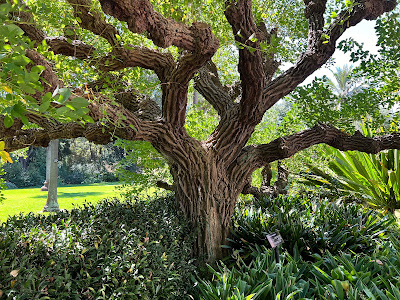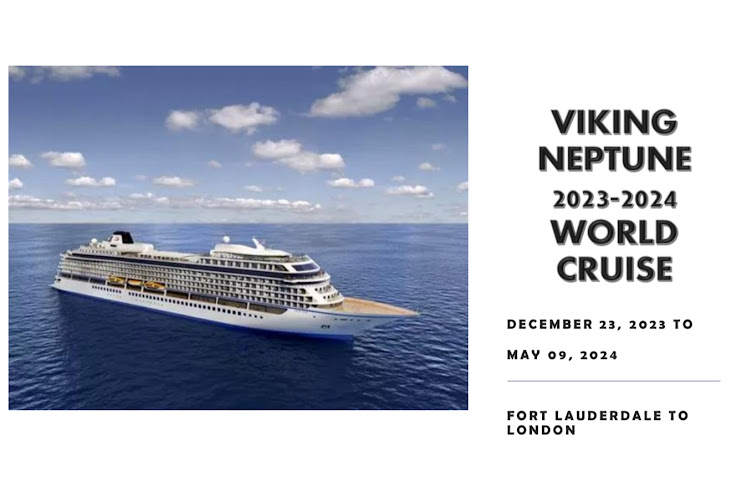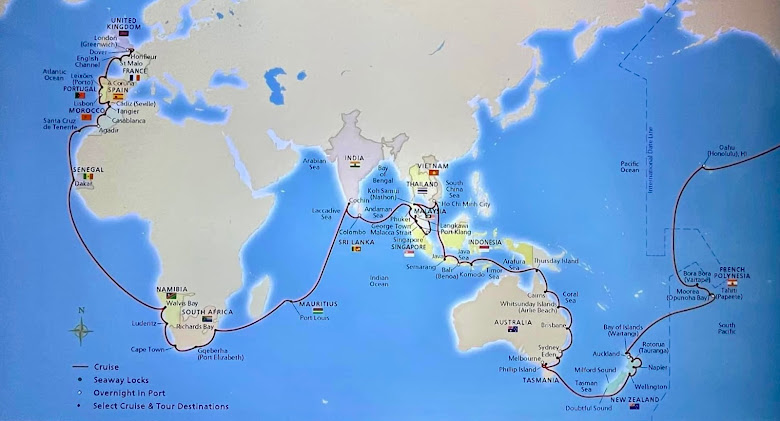We arrived at 9 PM the night before, but we were not allowed to get off the ship until we cleared immigration by 9 AM this morning. Interesting to note that we are not sailing as passengers, we are sailing as crew – – but only in Australia. So we didn’t have to go through immigration with the rest of the passengers. But we did have to walk a maze like rats. We had to meet at the Star Theater at 8:30 for a 9:45 AM tour. To get off the ship and wait for the passengers to go through immigration, and then find your group for your tour was absolutely insane. First you had a queue up in this line, and then you had a queue up in another line and then you had a walk out the door and down the stairs and around this one to get to your bus. I’ve seen some bad port buildings, but this one has to be right up there. Now I know why they needed an hour and 15 minutes to get us going.
Melbourne has been called the world’s most livable city. It enjoys a scenic setting on the large bay of Port Philip. Soon after Queen Victoria declared it a city of the crown in 1847, the rush to find gold in its rivers made it one of the world’s largest and wealthiest cities. Today, it is celebrated as the country’s cultural capital of the arts, and exudes a rich and lively British flare.
After we got all settled in our bus, we were on a tour that included a city tour, stopping at the Shrine of Remembrance, and finally a stop at the botanical gardens. The day was sunny and hot, about 95°. Fortunately, our tour was in the morning. We had an excellent driver/tour guide, who in five hours on this tour never stopped talking. Sometimes that’s good, sometimes it’s a pain. But today it was pretty good. We learned a lot and we saw a lot.
Melbourne is known for its arts scene, sporting events, and it’s Victorian and Georgian architecture. In driving around the city, there were old buildings from the 1800s interspersed with modern buildings. Some tall some short some in repair some outstanding. Some of the buildings were absolutely contemporary weird design but I couldn’t get pictures through the bus window. There is a tram system throughout the whole city which makes getting around fairly simple. We’re going to try that tomorrow.
The most outstanding aspect of Melbourne is its park system. Everywhere you look there is a park or green space. And these parks are not just parks, but they are mega parks. They have every sport known to man at the largest park, Albert Park in the St. Kilda area. This area in the 1800s used to be for the very wealthy as they would come from the city and spend summer days at the beach. Therefore, there were many beautiful homes to look at.
Our first stop, was at the Shrine of Remembrance, which was built in 1934. During World War I many soldiers were killed and not repatriated for burial. This structure was built to provide a place to grieve and remember Victorians killed in the first world war. It now provides a place of remembrance for Australian service and sacrifice for all wars since Australia’s federation in 1901. This building is built like a pyramid, and at the top is glass panes that allows sunlight to shine down on a plaque. On the 11th hour of the 11th day of the 11th month, the light shines down on the word love. Since we weren’t there at that specified time, they have re-created it, so that people may see it every half hour.
After the short visit here, we then went to the botanical gardens. Michael went and did the tour but at the last minute I decided not to do it as it was very hot and I was feeling a bit unsteady. The docent was a 91-year-old woman who has been giving tours through the botanical garden for over 40 years. She knew what every tree was, what every plant was, and talked about all of them. In hindsight, I’m glad I didn’t go because I would’ve liked to see flowers not the trees. I spent an hour talking with the tour guide, which was probably more informative than anything else I could’ve done!
 |
| Cypress |
 |
| Screw Palm - only grows in Australia |







